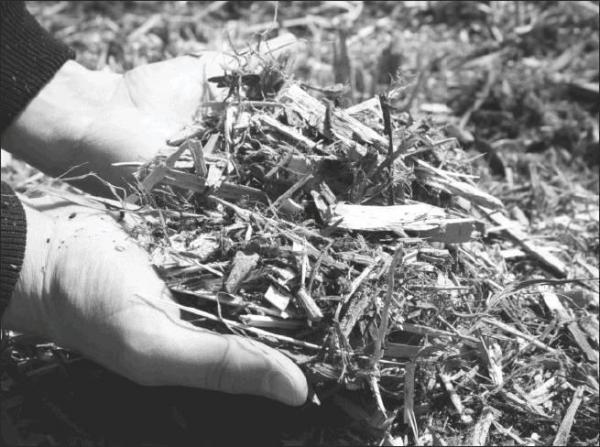Wise Winter Water
What is my secret to having beautiful, healthy trees all spring and summer? Easy, my secret is watering in the fall and winter!
A great many people consider fall to be the end of the growing season, but that’s certainly not how plants see it: for shrubs, trees, and perennials, fall is prime time for root growth. Once they’ve gotten a break from supporting leaves and flowers all summer, they devote their energies underground to the roots. Typically, fall weather is ideal for root growth: sunny, warm days, cool but not-quite-cold nights, and good soaking rains once a week or so. However, the season is notoriously unpredictable, and when we experience an unusually dry fall, there’s simply no getting around it: we must water our plants to help them make the most of the root growing season.
Fall watering isn’t as intensive as summer watering – if your irrigation system has been winterized, there’s no need to get it running again. You won’t need to water every day, and you’ll only need to water if you haven’t had a soaking rain for 10-14 days. When you do water, make sure to completely saturate the soil; a hose-end sprinkler is a great choice to make sure the job gets done properly. A thorough watering twice a month during mid-late fall should be sufficient for most soils, though if you have slow-draining clay or rocky soils, you may find that just once a month is enough.
When autumn watering is necessary, evergreens deserve extra attention, as do plants that were added to your landscape that same year. New shrubs, trees, and perennials haven’t yet developed a substantial root system, and helping them take the best advantage of autumn will pay big dividends next season and beyond. Evergreens, with leaves present year-round, never get a reprieve from the drying forces of sun and wind. However, when the ground is frozen, their roots cannot take up water to replace what is lost through the leaves. As such, it is vitally important that evergreens of all types, but especially broadleaf evergreens like boxwood, holly, and rhododendron, enter the coldest season well-watered and free of stress. In fact, these plants are candidates for fall watering even when rainfall is normal, as it can minimize or even eliminate the unsightly browning that often occurs in winter with these species.
One important tip for happy roots any time of the year: mulch. A 2-3” layer of organic mulch, such as shredded bark or fall leaves, should be in place around all of your plants by the time winter rolls around. Mulch fosters rapid root growth, and maximizes the benefits of fall watering, whether you provide it, or mother nature’s rain does. Once the ground begins to freeze (or rainfall returns to normal), you can finally devote your energies to more seasonally appropriate activities, like watching football, buying Christmas presents, and making pumpkin pies.
Although trees remain dormant during the winter, they are not immune to cold and dry conditions. Trees experience the stress of harsh winter weather – though they might not show it – and it’s usually a lack of water that does the most damage. Heading into the winter with dry roots can mean major trouble for trees in the spring.
Though it may be gray and wintry outside, your trees still need you. Long, dry periods without supplemental water can damage root systems and kill your trees. Although they may look normal in the spring, trees that have been weakened over the winter will usually die back later in the summer. Keep watering trees on a regular schedule through the fall and until the ground begins to freeze (if we get weather cold enough to freeze). Once the ground freezes, continue to monitor weather conditions throughout the winter months.
Water acts like an insulator, both to a tree and the soil. Soil that stays moist will be warmer; likewise, plant cells that are plump with water will be less susceptible to damage from the cold.
Trees which are dormant don’t need to be watered as frequently as during the growing season. When there is little to no snow cover and little precipitation, plan on watering your trees one to two times per month until they begin leafing out in the spring. If the site is particularly windy, your trees may need more water. Once the ground thaws in the spring, you can resume your regular watering schedule.
Water only when the temperature is above 40 degrees F and there is no snow or ice on the ground near your trees. Water early in the day, so the plants have time to absorb it before the temperature drops at night. Trees like their water slow and deep. Newly planted trees will require more frequent watering. You can check soil moisture by using a garden trowel and inserting it into the ground to a depth of 2″, and then move the blade of the trowel back and forth to create a small narrow trench. Then use your finger to touch the soil. If it is moist to the touch, then they do not need water.
Be careful to apply water all the way out to the edge of the tree’s root spread. Most established trees have a root spread equal to their height. Water deeply with a soaker hose, if possible, and avoid spraying on foliage if watering an evergreen tree.
Once again, let me mention mulch as it is one of the best things you can do for your trees heading into the winter. Adding a layer of organic mulch in the fall protects the soil from moisture loss and helps regulate soil temperature throughout the winter. I prefer to use the mulch that the trees supply us with – their fallen leaves, which really is nature’s mulch. Planting sites which are more exposed to potential freezing and thawing are prone to cracks in the soil, which can dry out a tree’s roots. Mulch acts as a blanket and can prevent this kind of damage.
Young or newly planted trees require special care in the fall and winter. They are much more susceptible to drought injury during the winter months. Make sure they are kept well-watered through the summer and fall up until the ground freezes, if it does, and water every couple of weeks during the winter when there is no snow cover.
As a special note on Evergreen trees I want you to keep in mind that they lose water through their needles in the dry winter air, so they need more stored-up water going into the winter season to make up for it. Cold, dry winds can actually strip water from Evergreens faster than their roots can absorb it. That’s why it’s especially important to provide a sufficient water supply in the fall, and water during dry spells during the winter.
While it may seem counterintuitive to get out the hose when everything around you is cold, brown, and gray, it’s critical to keep your trees alive and healthy. Don’t ignore your trees this winter. Keep watering them and see how they thank you with a beautiful show in the spring.





